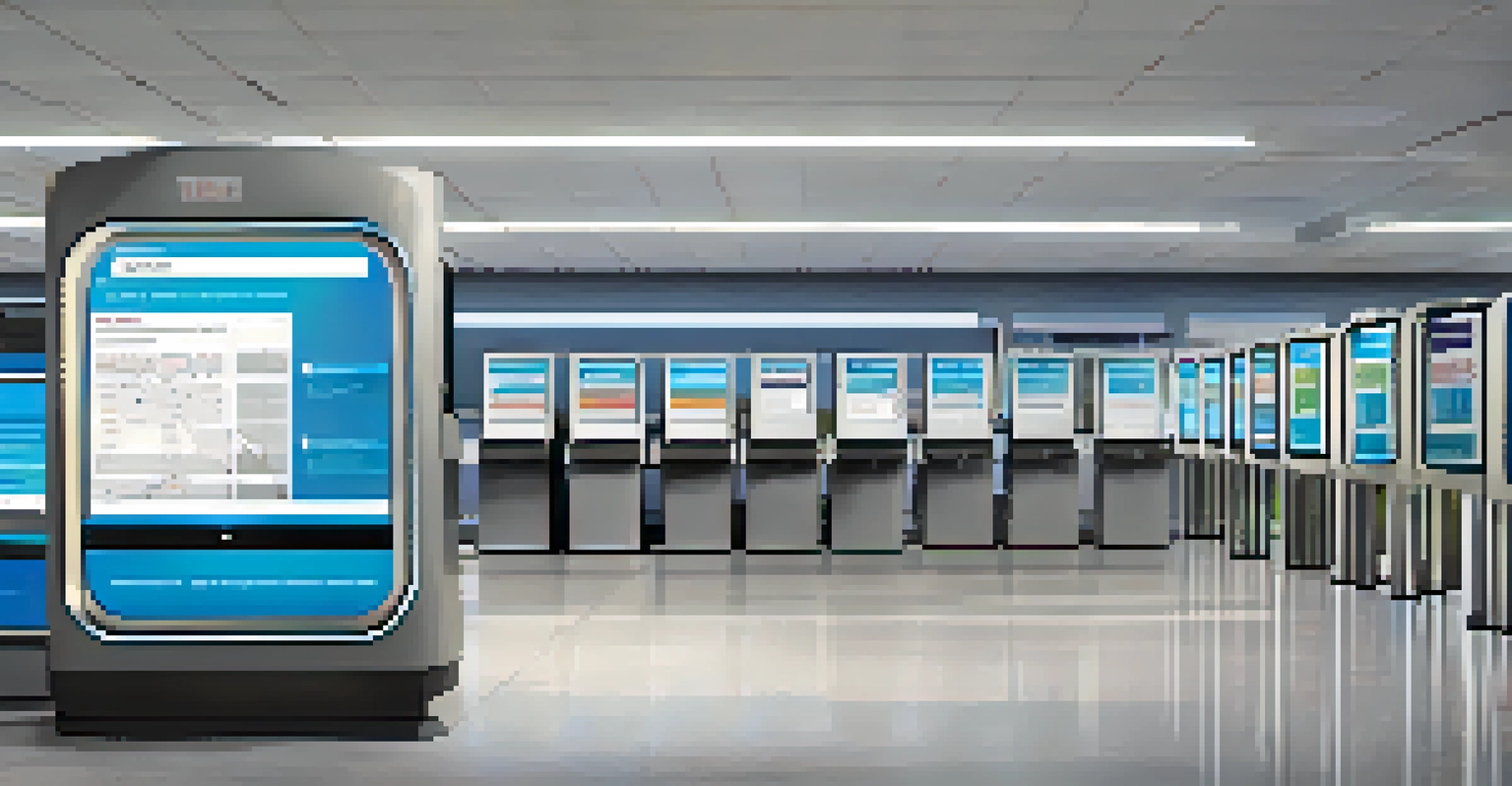Voting Trends and Electoral Policies in Washington State

Historical Context of Voting in Washington State
Washington State has a rich history of voting, reflecting broader national trends. From its first state elections in 1889, the state has continually evolved its electoral policies to enhance voter participation. Key milestones, such as the introduction of women’s suffrage in 1910 and the implementation of mail-in voting, have significantly shaped the current landscape.
The ballot is stronger than the bullet.
The state’s progressive history is evident in its early adoption of initiatives and referendums, allowing citizens a direct voice in governance. This trend toward inclusivity has fostered a culture of civic engagement, making Washington a pioneer in various voting reforms. Today, the state's voting practices continue to adapt to the needs of its diverse population.
Understanding this historical context is crucial for grasping the current voting dynamics. As we explore recent trends, it's essential to recognize how past policies have laid the groundwork for modern electoral practices. This foundation helps illuminate the ongoing shifts in voter behavior and policy adaptations.
Recent Voting Trends in Washington State
In recent years, Washington State has seen significant changes in voting trends, notably an increase in voter turnout during elections. This surge can be attributed to enhanced voter education efforts and the widespread use of mail-in ballots, which have made voting more accessible. For example, the 2020 presidential election saw turnout rates reaching historic highs, reflecting a growing civic engagement among residents.

Additionally, demographic shifts in the state are influencing voting patterns. Younger voters, particularly those in urban areas, are increasingly participating in elections, bringing new issues to the forefront, such as climate change and social justice. This change is reshaping the political landscape, as candidates adapt their platforms to resonate with this engaged electorate.
Voting Evolution in Washington
Washington State has a progressive history of electoral reforms that enhance voter participation, including women’s suffrage and mail-in voting.
These trends highlight a critical shift in Washington's political dynamics, with implications for future elections. As voter preferences evolve, understanding these trends will be key for candidates and policymakers alike. The growing diversity in the electorate promises to further influence upcoming elections and electoral policies.
Impact of Mail-In Voting on Voter Participation
Washington State was the first to implement all-mail voting in 2011, a system that has drastically changed how residents engage with the electoral process. This method allows voters to fill out their ballots at their convenience, leading to increased participation, especially among those who may face challenges getting to polling places. The convenience factor cannot be overstated, as studies show that mail-in voting tends to boost turnout rates across various demographics.
Voting is the foundation stone for political action.
Moreover, the state has continually refined its mail-in voting system, ensuring security and accessibility. Voters can track their ballots, receive reminders, and access assistance, which has helped build trust in the voting process. This comprehensive approach contributes significantly to Washington's reputation as a leader in electoral innovation.
As we look to the future, the success of mail-in voting in Washington may serve as a model for other states. The ongoing evaluation of this system's effectiveness and its impact on voter engagement will be key in shaping national conversations about electoral reform. Washington's experience could inspire broader adoption of similar practices across the country.
Voter ID Laws and Their Implications
Voter ID laws are a hot topic across the United States, and Washington State has taken a unique approach. While some states have stringent ID requirements, Washington does not mandate voters to present identification at the polls, which can be a double-edged sword. This policy aims to make voting more accessible, especially for marginalized groups who may not possess government-issued IDs.
However, this lack of ID requirements has sparked debates about election integrity. Critics argue that it could potentially open the door to voter fraud, although studies have shown that such incidents are exceedingly rare. Balancing accessibility with security remains a crucial conversation among policymakers and the public.
Impact of Mail-In Voting
The implementation of all-mail voting in Washington has significantly increased voter turnout by making the process more convenient and accessible.
As Washington continues to navigate these issues, the state's approach to voter ID laws will likely influence broader discussions nationwide. The ongoing dialogue underscores the importance of ensuring that electoral policies reflect the needs and values of the community while maintaining the integrity of the voting process.
The Role of Technology in Electoral Processes
Technology has revolutionized the electoral process in Washington State, enhancing both voter engagement and administrative efficiency. From online voter registration to digital ballot tracking, these innovations have made the voting experience more user-friendly. For instance, voters can now register and update their information online, significantly reducing barriers to participation.
Moreover, technology has played a vital role in increasing transparency in elections. Real-time reporting of election results via secure online platforms allows citizens to stay informed, fostering trust in the electoral process. This transparency is essential for maintaining public confidence, particularly in an era where misinformation can easily spread.
As Washington continues to embrace technological advancements, the state may become a model for others looking to modernize their electoral systems. The ongoing integration of technology will not only improve voter experience but also strengthen the democratic process, paving the way for more engaged and informed citizens.
Engaging Young Voters in Washington State
Engaging young voters is crucial for the future of democracy, and Washington State has been proactive in this regard. Initiatives like the 'Vote 411' campaign aim to provide young citizens with the information they need to participate in elections. By leveraging social media and peer-to-peer outreach, these programs are making an impact in motivating younger generations to exercise their voting rights.
Furthermore, Washington has implemented policies aimed at facilitating youth participation, such as allowing 16- and 17-year-olds to preregister to vote. This forward-thinking approach not only encourages civic engagement among young people but also helps establish lifelong voting habits. The early engagement strategy is proving effective, as evidenced by increasing turnout rates among younger voters.
Engaging Young Voters
Washington State's initiatives to involve young voters, such as preregistration and social media outreach, are crucial for fostering lifelong civic engagement.
As the state continues to adapt its strategies for engaging young voters, the impact of these efforts will be essential in shaping future elections. Empowering the youth to take part in the democratic process is vital for ensuring that their voices are heard. Washington's commitment to nurturing this engagement sets a precedent for other states to follow.
Looking Ahead: Future Electoral Policies in Washington
As we look to the future, Washington State is poised to continue evolving its electoral policies in response to changing demographics and voter needs. Policymakers are actively discussing potential reforms to further enhance accessibility and voter participation. Initiatives aimed at reducing barriers, such as automatic voter registration and expanded mail-in voting, are likely to be at the forefront of these discussions.
Moreover, the increasing emphasis on security and integrity in elections will shape future policies. Washington’s experience with technology and transparency will serve as a guiding framework for addressing these concerns. By prioritizing both accessibility and security, the state can work towards a more robust electoral system that meets the needs of all its citizens.

Ultimately, the ongoing dialogue around electoral policies in Washington will be essential in maintaining a healthy democracy. As the state continues to lead the charge in innovative voting practices, it sets a precedent for others to follow. Keeping the conversation alive ensures that all voices are heard and represented in the electoral process.